BSDB/BSCB/JSDB Joint Spring Meeting Report, part one
Posted by Lucy Freem, on 1 May 2012
The 2012 Spring meeting of the British Society for Developmental Biology was held on the 15th-18th April at the spacious campus of Warwick University. The meeting was held jointly with the Japanese Society for Developmental Biology and the British Society for Cell Biology. Many delegates from the JSDB attended, presented interesting talks and posters and greatly enlivened proceedings.
Sunday: Plenary lectures
The evening BSDB plenary lecture was given by Denis Duboule on the vertebrate Hox clock, describing the regulation of temporally and spatially collinearly expressed Hox genes. Focusing on the HoxD cluster, he described the use of ChIP and chromatin crosslinking to map the state of Hox gene packaging at different points in the Hox expression clock, presenting a directional chromatin transition-mediated model for temporal regulation of Hox gene expression within a Hox cluster. The BSCB plenary lecture by J.Richard McIntosh of the University of Colorado discussed microtubule tips as mechano-chemical devices, describing work showing how microtubules are capable of transporting loads at the depolymerising pole of the microtubule through the behaviour of depolarising filaments.
The joint plenary session was a great start to the conference on Sunday night, followed by the student and post-doc social pub quiz (joined by a few BSDB committee members), a great chance for some in-depth student socialising. Honourable mention to the winners of the coveted ‘best team name’ prize, Insane in the Phospholipid Bilayer, for making everyone laugh.
Monday: Systems biology, scientific careers, imaging in development, and a turbulent AGM
The day’s first session on systems biology and next generation genome sequencing was opened by Duncan Odom speaking on transcriptional regulation in mammals, looking in particular at non-conserved promoter sequences that produce conserved transcription factor binding patterns along the cis-regulatory region. Shane Herbert described the role of the homeobox gene hlx1 in sprouting endothelial tubules in zebrafish angiogenesis, introducing the tip/stalk model of growing blood vessels that appeared again in later talks. Erika Sasaki of the Institute for Experimental Animals in Kawasaki gave a fascinating talk on the use of lentiviral vectors in the generation of transgenic marmosets and the applications of transgenic primates in neurological and preclinical research. Kazuo Emoto from the Osaka Bioscience Institute opened the second half of the session with a talk on the shaping of Drosophila sensory neuron dendritic trees into sensory lattices through growth, calcium-current related pruning, regrowth and reshaping.
The Monday lunchtime career panel of PIs arranged by conference organiser Kim Dale dispensed advice and answered post-doc and student questions. The process of carving out a distinct and different niche in your field was discussed, as well as the importance of having and nurturing a passion for your chosen research subject – to sustain you through the inevitable lows (“It doesn’t stop hurting, but you eventually grow numb…”) of labwork, publishing and funding as well as the highs. The impact of uncertainty and mobility in scientific careers on partners was also discussed, with the panel mentioning the necessity of discussing the burdens of scientific spouses. There was also mention of the importance of awareness of the ticking fellowship clock, with panellists stressing that many independent fellowships are restricted to applicants within 6 years of their PhD award. For those interested in interdisciplinary research, the EIPOD EMBL postdoctoral fellowship program was recommended later in the conference.
The Monday afternoon session contained a range of talks on imaging space and time during development. Elliot Meyerowitz of the new Sainsbury Laboratory in Cambridge (who have a stated wealth of funding, positions and space, for all the plant developmental biologists reading) gave the lone but highly engaging plant development talk of the conference on shoot apical meristem patterning, including computer modelling of the role of both morphogens and physical forces on cells in the spiral pattern of meristem development. Toshiko Fujimori presented findings on cilia development and function in the mouse oviduct. He focused on the role of planar cell polarity in cilia orientation and oviduct membrane folding, demonstrating the links between micro and macroscopic organ morphology.
Antonio Jacinto’s talk on epithelial wound closure showcased some interesting videos of laser ablation and wound healing in Drosophila epithelial sheets, unpicking the rapid cytoskeletal processes behind the epithelial cell reshaping response to injury. Georgina Stooke-Vaughn from Sheffield University gave an assured talk on her ongoing PhD work on otolith development and hair cell cilia in the developing zebrafish vestibular system. Ryoichiro Kageyama of Kyoto University spoke on ultradian (shorter than circadian) rhythms in the somite segmentation clock in mouse, focusing on the processes behind and downstream of oscillations in Hes7 expression in the presomitic mesoderm. Hes expression oscillation was a popular theme, also appearing in several posters and the Beddington medal talk.
Finishing the afternoon session with a bang, the Hooke medal talk was delivered by Holger Gerhardt of Cancer Research UK on cell competition and vascular development in zebrafish, discussing tip and stalk cell dynamics in growing epithelial tubules. He presented both experimental and compelling visualised mathematical model evidence for a regulatory network involving VEGF and Notch that patterns angiogenic branching at intervals along the zebrafish spine.
The BSDB AGM took place on Monday evening. The vote to fill 3 open BSDB committee spaces was held, and it was announced later in the conference the new members are Anna Philpott, Jo Begbie and Henry Roehl. It was also announced that future spring meetings will be held at Warwick University for the next few years.
The evening poster session was lively and stimulating, with freely flowing ideas and beer.


 (No Ratings Yet)
(No Ratings Yet)


 (1 votes)
(1 votes) Each year, the British Society for Developmental Biology awards the Beddington Medal for the best PhD thesis in developmental biology. At the 2012 BSDB meeting, this award went to Boyan Bonev, who completed his PhD in Nancy Papalopulu’s lab at the University of Manchester. At the conference, Boyan gave a talk about his PhD work, describing how microRNA-9 promotes neural progenitor heterogeneity in a context-dependent manner. Find out more about Boyan’s work, and what he’s up to next, in this interview.
Each year, the British Society for Developmental Biology awards the Beddington Medal for the best PhD thesis in developmental biology. At the 2012 BSDB meeting, this award went to Boyan Bonev, who completed his PhD in Nancy Papalopulu’s lab at the University of Manchester. At the conference, Boyan gave a talk about his PhD work, describing how microRNA-9 promotes neural progenitor heterogeneity in a context-dependent manner. Find out more about Boyan’s work, and what he’s up to next, in this interview. Registration deadlines:
Registration deadlines: